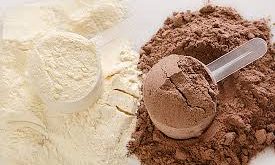You might feel a sudden pop, notice an unexpected bulge, or even have unexplained pain when doing everyday things like getting in and out of the car. Hernias can show up in surprising ways.
Understanding Hernias and Their Causes
Your abdomen houses vital organs, protected by the abdominal wall. A hernia is when a weakness in this wall allows organs to bulge through. Causes include muscle weakness (weight gain, aging), strain (lifting, pregnancy), injuries, and prior surgeries. Symptoms may include a visible bulge and pain. Hernias can lead to emergencies, if organs get trapped. Obesity and smoking increase risks.
Defining Obesity
Obesity is a state in which an individual’s body weight surpasses the healthy range for their specific height. A straightforward way to gauge whether you fall into the category of overweight or obese is by computing your Body Mass Index (BMI). BMI offers an approximation of your body fat concerning your height and weight.
BMI helps estimate disease risk due to excess body fat. Over 25 is overweight, 30 is obese, and 35+ is morbidly obese.
The Connection Between Obesity and Hernia Formation
Obesity heightens the likelihood of abdominal wall hernias. Excess weight places increased strain and pressure on abdominal muscles, rendering them weaker and more susceptible to hernia development. Over time, this added weight can cause hernias to expand in size. In certain instances, it may result in a segment of the intestine becoming trapped within the muscle, causing severe pain and necessitating urgent intervention. Obesity can also contribute to the emergence of multiple hernias in the abdominal muscle wall.
Common Hernia Types
Hernias are classified by location:
- Inguinal Hernia: In the groin; can be complete (reaching the scrotum) or incomplete. More common in men.
- Femoral Hernia: Found in the front of the thigh; more common in women.
- Umbilical Hernia: At the navel; associated with multiple pregnancies.
- Epigastric Hernia: Upper abdomen, above the navel.
- Incisional Hernia: Develops at previous incision scars or repaired hernia sites.
Inguinal hernias comprise 75% of cases, posing a higher risk to males (27%) compared to females (3%). Globally, there are over 20 million annual mesh implants, although precise surgery numbers fluctuate.
Risks of Hernia Surgery in Overweight or Obese Individuals
High BMI individuals face increased risks after hernia surgery, including:
- Higher hernia recurrence risk.
- Elevated infection rates and slower healing.
- Longer surgery and hospital stay.
- Less effective pain relief and outcomes.
- Greater risk of blood clot formation (DVT) that can be life-threatening (PE). Additional factors like diabetes, lung disease, and smoking can worsen complications.
Options available for hernia treatment
Hernia treatment options include open and laparoscopic repair. Now even mini-open techniques provide advantages over conventional open repairs. Wounds in almost all operations are closed with skin glue avoiding sutures and bad scars.
Glue also replaces sutures for mesh fixation, reducing pain and nerve entrapment risk. It’s biocompatible with rare adverse reactions.
3D mesh in hernia repair offers better security, lower recurrence rates, and increased patient comfort. It’s available in materials like polypropylene and Ultrapro mesh, a composite designed for safety and comfort.
In modern hernia surgery, lightweight meshes like Ultrapro are preferred. Ultrapro is made from polypropylene with a lower density and includes an absorbable material, polyglecaprone, which reduces shrinkage to around 10% and enhances patient comfort by stretching with the body’s muscles. Scientific data supports the use of these lightweight meshes for improved hernia surgery outcomes.
Comprehensive Strategies to Minimize Complications in Obese Hernia Patients
For obese individuals with non-emergent hernias, a multifaceted approach can significantly reduce surgery-related risks:
- Facilitating structured weight loss under the guidance of a dietitian, emphasizing goal setting and ongoing support. Enhancing healing with proper nutrition, incorporating vitamin supplementation and a diet rich in protein.
- Incorporate preoperative physiotherapy, including breathing exercises and regular walking, to enhance overall fitness.
- Prioritize skin care at the hernia site to minimize infection risks and promote optimal wound healing.
- Optimize pre-existing medical conditions (e.g., diabetes, hypertension, cardiac issues) for overall health. Note that smoking significantly elevates infection risk post-surgery, potentially necessitating IV antibiotics, drainage, and mesh removal. Smoking can also lead to breathing difficulties, especially in patients with large hernias and smoking history, increasing lung complication risks during and after surgery. Additionally, smokers face heightened pneumonia and blood clot formation risks.
Dr. Rajeev Premnath, General, Laparoscopic Surgeon and Endoscopist,
Hitech Hernia Centre, Ramakrishna Hospital Jayanagar, Bengaluru
 Newspatrolling.com News cum Content Syndication Portal Online
Newspatrolling.com News cum Content Syndication Portal Online





